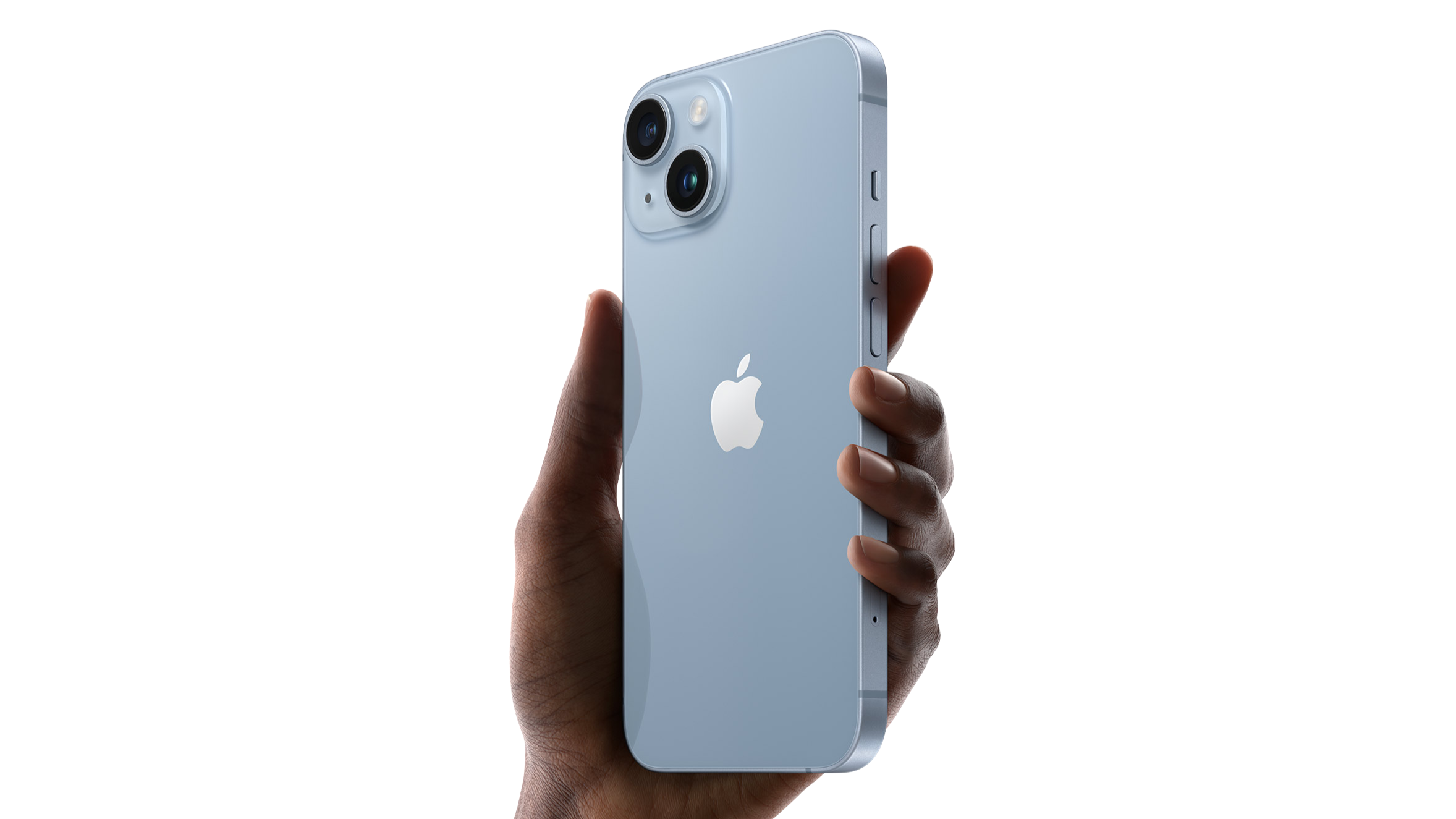

The iPhone 13 has spent a year as the everyperson’s iPhone, and while we have a soft spot for the iPhone 13 mini we prefer its full-size sibling. But it’s time for the iPhone 13 to meet its replacement, the iPhone 14, and from what we’ve seen so far it takes everything great about the iPhone 13 and adds some welcome improvements. Unless, that is, you wanted another mini: that one’s heading for the farm where iPhones go to retire.
Here’s what you need to know about Apple’s best iPhone for most people.
iPhone 14 vs iPhone 13: price and release date
The iPhone 13 launched in September 2021 with a starting price of £779/$799/AU$1,349 for the 128GB version. The 256GB version was £879/$899/AU$1,519, and the top 512GB option was £1,079/$1,099/AU$1,869.
The new iPhone 14 is also $799 in the US but the price has increased in the UK to £849 for the cheapest 128GB model. The 512GB option, the most expensive, is $1,099 / £1,179. If you want the same specification as the iPhone 14 with a bigger screen, the iPhone 14 Plus is $100/£100 more expensive.
Pre-orders for the new iPhone begin on 9 September with availability from 16 September.
iPhone 14 vs iPhone 13: design
The iPhone 13’s upgrades were subtle: a brighter screen, more 5G bands and an improved processor, but nothing dramatically different in the design department. And the iPhone 14 doesn't exactly show Apple throwing caution to the wind either: available in a choice of Midnight, Starlight, Blue, Purple and Red. It's almost identical to the iPhone 13 and has the familiar notch at the top of the display.
The biggest design change is the removal of the iPhone 13 mini from the line-up in favour of a larger iPhone instead, the 6.7-inch iPhone Plus. It's otherwise identical to the iPhone 14 but has a marginally bigger screen at 6.7 inches compared to 6.1 for the normal iPhone.
Get all the latest news, reviews, deals and buying guides on gorgeous tech, home and active products from the T3 experts
iPhone 14 vs iPhone 13: cameras
Like the iPhone 12, the iPhone 13 has a dual-camera 12MP assembly with one wide and one ultra-wide lens. There’s sensor-shift image stabilisation for better low light shots, and Apple added Photography Styles so you could save presets for fast access without having to use filters. Video is 4K at up to 60fps with Dolby Vision HDR or 1080p slo-mo at up to 240fps.
The iPhone 14 cameras are very similar in specification to those of the iPhone 13 Pro. While its main camera is still 12MP there's a much larger sensor, a wider aperture, sensor-shift optical image stabilisation and improved processing for much better quality in less than ideal lighting conditions. Apple says the iPhone 14 camera is 2x better in low light performance than the iPhone 13 and 2.5x better while using the new main camera.
The front camera is a 12MP TrueDepth with an f/1.9 aperture; Apple says it delivers 38% better low light performance. There's also a new GoPro-style Action Mode designed for recording video while you're in motion, offering the kind of results you'd normally need separate hardware for.
iPhone 14 vs iPhone 13: performance and battery
The iPhone 13 has Apple’s A15 Bionic processor, an evolutionary step up from the A14 in the previous model. It’s a 6‑core CPU with 2 performance and 4 efficiency cores, 4 GPU cores and a 16-core Neural Engine. And the iPhone 14 has... Apple's A15 Bionic processor.
This is the version from the iPhone 13 Pro, though, and that means a 5 core GPU that's up to 18% faster than the iPhone 13. This A15 Bionic has more efficient cores and an improved neural engine as well as a custom image signal processor for the camera. That means better photos and much faster performance than in the iPhone 12. However it's telling that most of Apple's trademark mysterious percentage performance comparisons were against unnamed rivals rather than previous iPhones. Don't expect a dramatic difference in everyday operation.
iPhone 14 vs iPhone 13: display
Sadly the iPhone 14 doesn't get the variable refresh always-on displays of its Pro siblings; as before it's a 6.1-inch OLED with a typical max brightness of 800 nits and a resolution of 2,532 x 1,170. If you go for the iPhone 14 Plus the display is the same but the resolution is 2,278 x 1,284.
iPhone 14 vs iPhone 13: early verdict
If you have to have the latest iPhone then go ahead: the iPhone 14 is a great phone. But it's not necessarily a great upgrade unless you really want the extra camera horsepower that the standard iPhone 13 lacked – and if you do, we'd ask whether you can stretch your budget to get the iPhone 14 Pro, which is where things really get interesting in the camera department. For older iPhone owners the iPhone 14 is a significant upgrade, but it's a relatively minor – and in the UK, more expensive –upgrade over its predecessor. You might want to see how iOS 16 changes your phone before deciding whether it's time to splash any cash on a new one.
Writer, musician and broadcaster Carrie Marshall has been covering technology since 1998 and is particularly interested in how tech can help us live our best lives. Her CV is a who’s who of magazines, newspapers, websites and radio programmes ranging from T3, Techradar and MacFormat to the BBC, Sunday Post and People’s Friend. Carrie has written more than a dozen books, ghost-wrote two more and co-wrote seven more books and a Radio 2 documentary series; her memoir, Carrie Kills A Man, was shortlisted for the British Book Awards. When she’s not scribbling, Carrie is the singer in Glaswegian rock band Unquiet Mind (unquietmindmusic).
